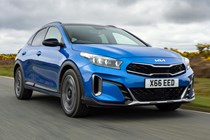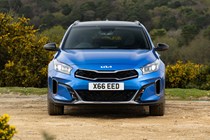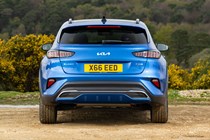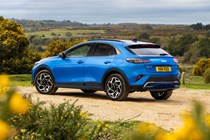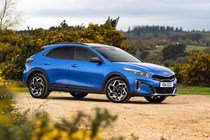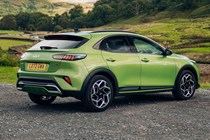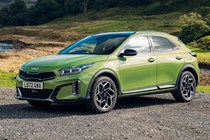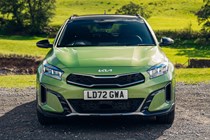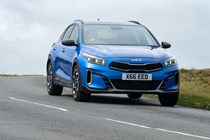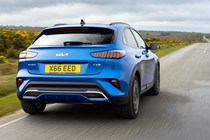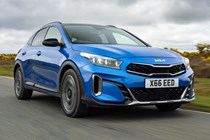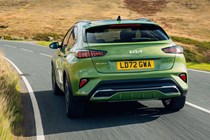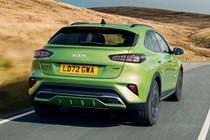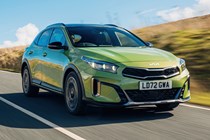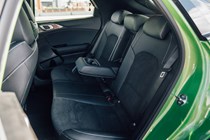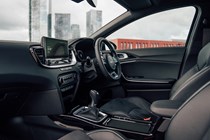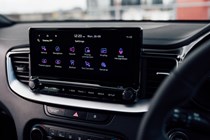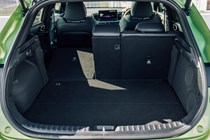Kia Xceed engines, drive and performance
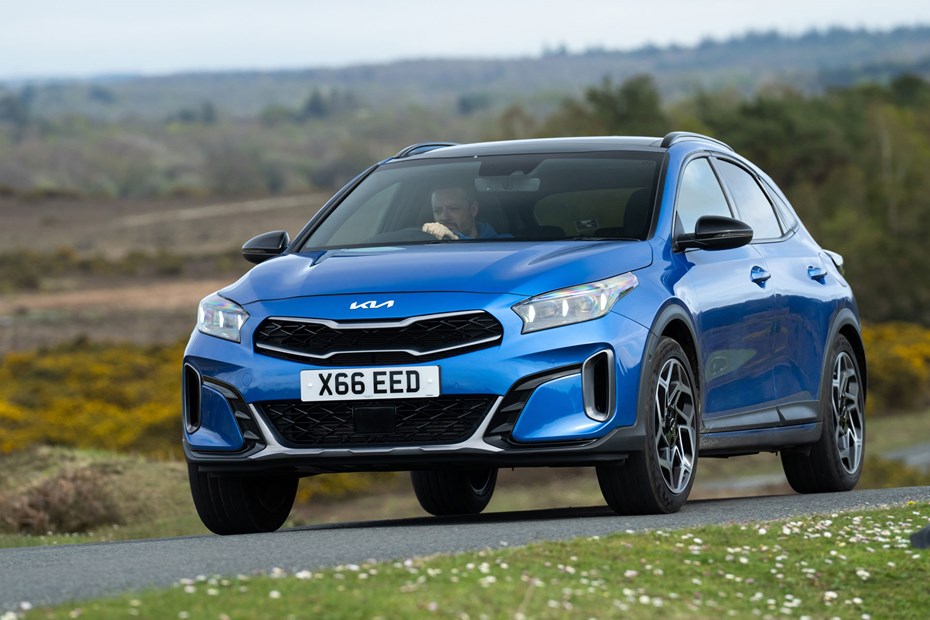
- Only one engine offered since 2024 update
- It’s a 1.5-litre turbo petrol with 140hp
- Choice of manual and automatic gearboxes
Kia XCeed engines
The only engine you can currently get in the Kia XCeed is a 1.5-litre T-GDI, as everything else was dropped when the vehicle was most recently updated in 2024. This motor is a turbocharged unit and delivers 140hp with 253Nm of torque (pulling power). Adequate for most family SUV duties if not especially exciting.
This engine comes attached to a six-speed manual gearbox, with a seven-speed DCT automatic optional on all but the entry-level trim specification. This dual-clutch transmission is similar in technology to Volkswagen DSG and shift smoothly enough. But its primary focus is fuel economy rather than thrills; like the engine, it can feel a little dull, being typically disinterested in downshifting for performance when driven in Eco or Normal mode.
As such, overtaking needs to be planned carefully rather than considered on a whim. Still, it’s relaxing to use around town, and the extra seventh gear helps make the auto quieter than the manual car on the motorway. The manual is marginally quicker, however, taking 9.5 seconds to go 0-62mph compared with the auto’s 9.7 seconds. Both have an identical 129mph top speed.
Discontinued Kia XCeed engines
Prior to the 2024 update a range of other engines have been offered in the XCeed.
Petrol buyers could previously choose a turbocharged 1.0-litre three-cylinder petrol engine with 120hp and 172Nm of torque, or a 160hp version of the 1.5-litre turbo (with the same 253Nm as the current 140hp car). We described the 1.0 as ‘adequate if slightly sluggish’ when new, while the more powerful 1.5 has all the same strengths and weaknesses as the latest model, albeit with a little more vim.
Prefer diesel? Then perhaps seek out a used example of the clever 1.6-litre four-cylinder 48V mild-hybrid introduced in 2021 and paired with Kia’s Intelligent Manual Transmission. This features an electrically operated clutch rather than a traditional hydraulically controlled unit, enabling drive to be disengaged whenever the car senses an opportunity to save some fuel.
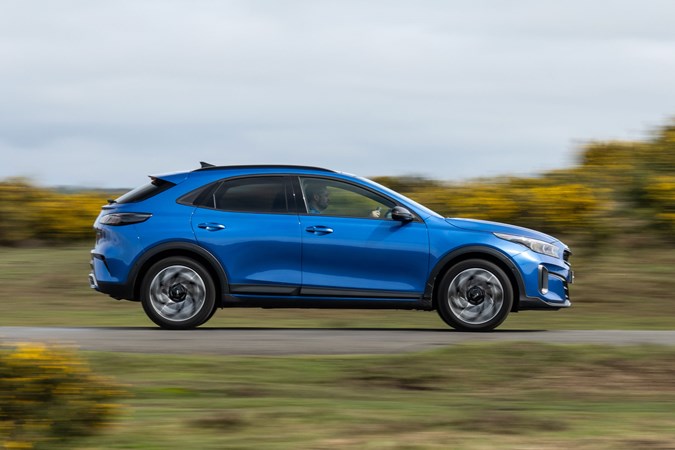
Good news: the driver doesn’t need to do anything. When you lift your foot off the throttle, the XCeed will automatically dip the clutch and turn the engine off – and a little boat icon will appear on the dashboard to let you know you’re “sailing” (which is Kia’s in-house terminology for coasting).
Need to accelerate again? Simply press the throttle or the clutch to wake the engine back up again and you’re away. It’s a very intuitive system which we guarantee you’ll figure out within minutes of driving. Naturally, there is a slight delay while you wait for the engine to turn back on. It isn’t annoying, but it’s worth remembering if you’re lining up an overtake.
Kia also used to offer the XCeed with a plug-in hybrid powertrain. This mixes a 1.6-litre four-cylinder petrol engine with a 60hp electric motor and an 8.9kWh battery pack for a combined output out 141hp and 265Nm of torque. That doesn’t sound bad on paper, but performance was far from sparkling in the real world.
The PHEV system adds around 200kg to the XCeed’s kerb weight, dulling acceleration. Also, Kia decided to fit its plug-in powertrain with a dual-clutch automatic gearbox rather than a continuously variable transmission (like you get in a Toyota Yaris Cross), which doesn’t help.
Normally, we’d prefer the DCT – but it doesn’t seem to work in the XCeed’s case. It’s sluggish and seems to sap power from the electric motor, losing that instant acceleration buyers crave in a PHEV. There are better plug-in hybrid SUVs around, including Kia’s own Niro.
What’s it like to drive?
- Good balance between handling and comfort
- Feels nimble and compact on the road
- Pliant ride comfort
The XCeed isn’t as fun to throw down a back-road as a Ford Focus Active, a similarly enhanced conventional hatchback – but Kia has struck a keen balance between handling and comfort. And, because it’s only slightly taller than the Ceed hatchback on which it’s based, it doesn’t feel as big as traditionally shaped SUV rivals such as the Volkswagen T-Roc and Mercedes GLA.
In fact, it almost drives like a normal car. The petrol models are nimbler than the PHEV, because they don’t have to deal with the added bulk of the electric motor and battery pack. They turn in more sharply and roll less in the corners. The steering feels a little vague, but the same thing can be said of most family crossovers.
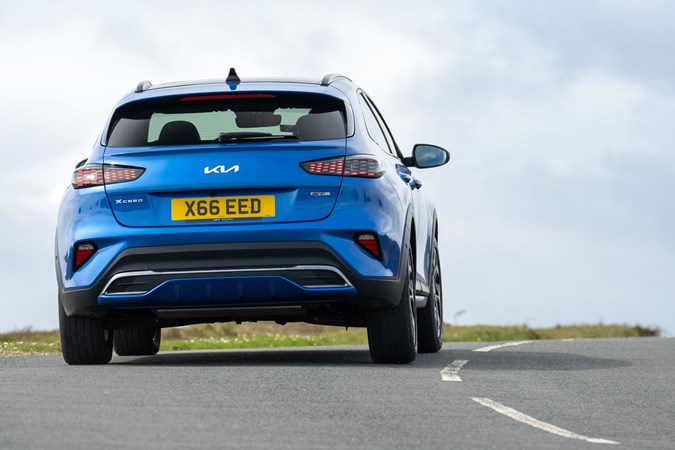
The suspension does a good job of cushioning you from the worst craters, but it doesn’t wallow about like a barge caught in a storm. This is thanks to two things – the spring rates are softer in the XCeed than the standard Ceed hatchback and the car is fitted with hydraulic rebound stoppers.
Most cars have fixed rubber rebound stoppers, which create a hard barrier at the end of the suspension travel to prevent the dampers from smashing themselves to bits when you drop into an enormous pothole. Kia’s system has a rubber stopper floating around in an oil bath instead – and this allows the XCeed to deal with severe jolts more progressively.


